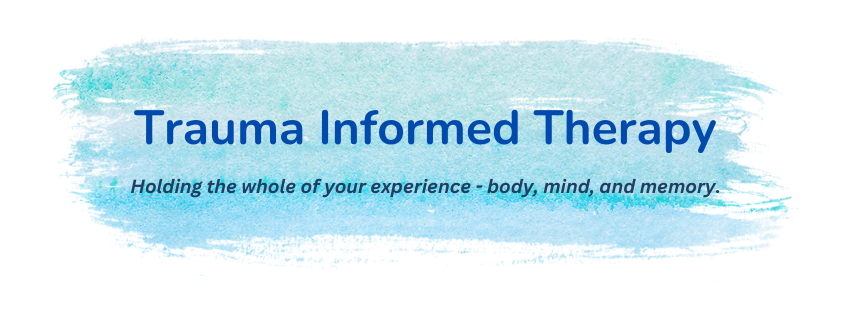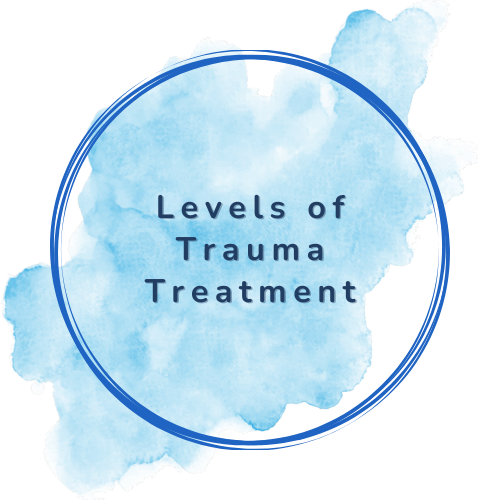
At The Surrey Centre, we offer a trauma-informed approach that recognises the deep and lasting effects trauma can have on the body, mind, and emotions. Our therapists use a combination of EMDR, somatic processing, meditation, and breathwork to create a safe and empowering space for healing. This approach is tailored, compassionate, and grounded in the belief that healing from trauma is possible when individuals feel safe, supported, and understood.

Somatic Processing
Trauma is not just stored in the mind—it’s deeply embedded in the body. Somatic therapy helps individuals tune into bodily sensations, recognise physical tension patterns, and use movement or breath to discharge stored trauma. Techniques might include:
- Grounding exercises to re-establish a sense of safety.
- Body scans to identify where trauma is held.
- Gentle movement to release stuck energy.
EMDR (Eye Movement Desensitization and Reprocessing)
EMDR helps reprocess traumatic memories by using bilateral stimulation (such as eye movements or tapping) to desensitize distressing experiences. This therapy allows individuals to relieve the emotional charge of traumatic memories and integrate them in a healthier way.
Meditation and Breathwork
These techniques help regulate the nervous system and build resilience. Trauma often creates chronic states of hyperarousal (anxiety, panic) or hyperarousal (numbness, dissociation). Meditation and breathwork work to restore balance by:
- Activating the parasympathetic nervous system (rest-and-digest mode).
- Encouraging mindfulness to break the cycle of intrusive thoughts.
- Allowing for emotional processing in a non-reactive state.

Creating a Safe Environment
Before any trauma processing can occur, individuals need to feel physically, emotionally, and psychologically safe. This might include:
-
- Establishing trust with the therapist.
- Setting up predictability and structure in sessions.
- Teaching basic self-regulation skills to manage overwhelm.
- Psycho-education: Explanation of what trauma is and how it develops.
Using Visualisation to Create Internal Safety
Many trauma survivors lack an internal sense of security. Visualisation exercises help individuals:
-
- Develop an inner safe space they can imagine and call to mind to ground themselves.
- Reimagine past traumatic experiences with protective elements.
- Build resilience by fostering positive sensory experiences.
Telling Your Story Safely
Revisiting traumatic experiences can be overwhelming. The goal is to process memories without re-traumatisation. Techniques may include:
-
-
- Narrative therapy (telling one’s story in a structured way).
- Externalising trauma (viewing it from a distance rather than reliving it).
- Using art, writing, or symbolic imagery to express emotions.
- Using techniques such as Outlining, SIBAM model, Bodynamic Running Technique
-
Creating 8 Safety Protocols
Safety is essential for deep trauma healing. These protocols might include:
-
-
- Grounding techniques (pressing feet into the floor, engaging senses).
- Self-soothing strategies (gentle touch, self-compassion statements).
- Emergency distress plans (knowing when to step back from triggering work).
- Resources/Identifying supportive people or spaces for when distress arises.
-

Below are quotes from two trauma practitioners that inspire our work at The Surrey Centre
The Body Remembers by Babette Rothschild:
- “PTSD – disrupts the functioning of those affected by it, interfering with their abilities to meet daily needs and perform the most basic of tasks.”
- “Trauma – continues to intrude with visual, auditory, and/or other somatic reality on the lives of its victims.”
Waking The Tiger Healing Trauma by Peter Levine:
- “When we are unable to flow through trauma and complete instinctive responses, these in completed actions often undermine our lives. Unresolved trauma can keep us excessively cautious and inhibited, or lead us around in ever-tightening circles of dangerous re-enactment, victimisation, and unwise exposure to danger”.
- “Until – we understand that traumatic symptoms are physiological as well as psychological, we will be woefully inadequate in our attempts to heal trauma.”

Trauma-informed therapy is not a one-size-fits-all approach. It requires patience, flexibility, and a deep understanding of how trauma manifests in the body and mind. By integrating somatic practices, EMDR, meditation, and breathwork, individuals can move from survival mode to a place of resilience, empowerment and healing.
